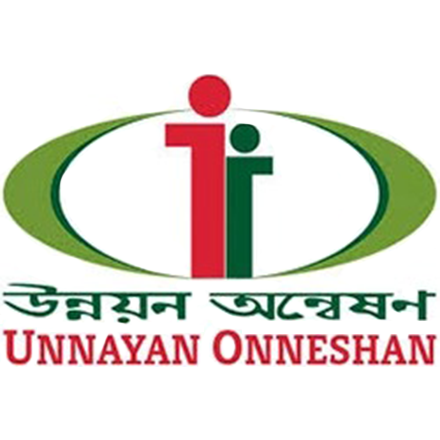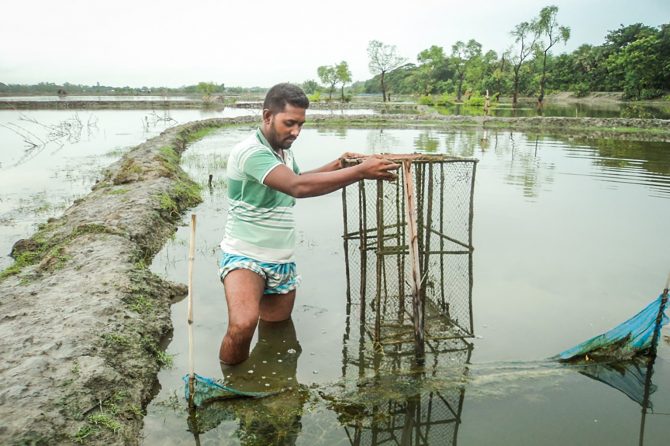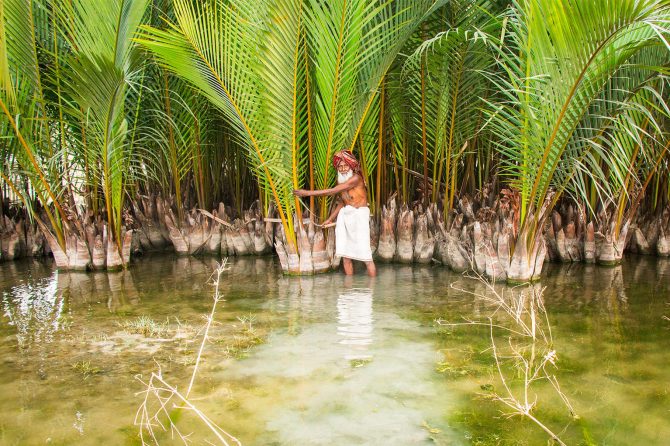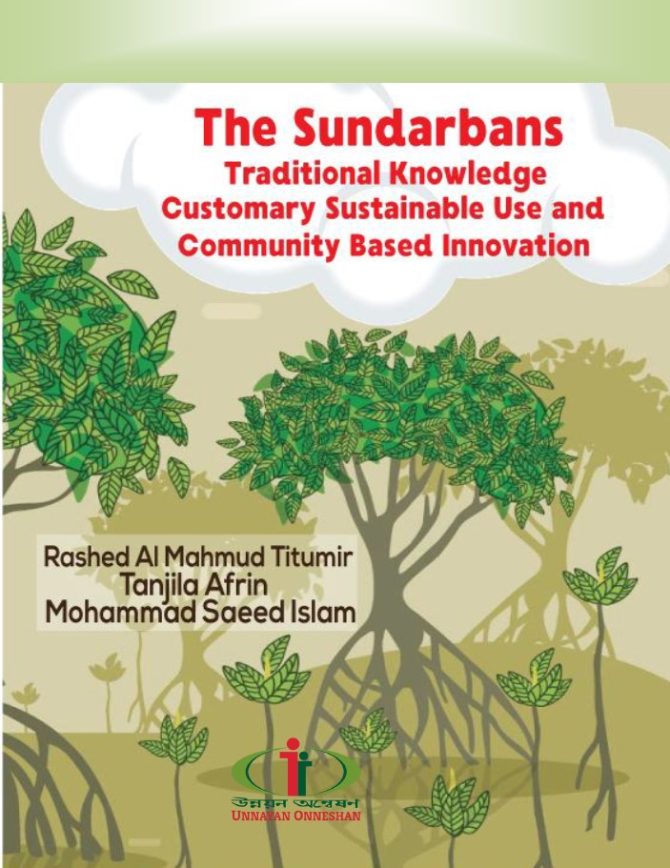2017 BANGLADESH
Designing an Enhanced Bio-diverse Adaptation to Climate Change in the Sundarbans
Unnayan Onneshan (UO)
Community / field-based implementation
Seascape
Overview
The Sundarbans is the largest contagious mangrove ecosystem of the world enriched with high biodiversity. The combination of various types of ecosystems (forest, coastal and wetland) makes the Sundarbans home to uniquely-adapted aquatic and terrestrial flora and fauna. A significant number of people maintain their livelihoods by utilising these resources. This globally important ecosystem is now vulnerable due to anthropogenic pressures amidst fragile institutions and ineffective command-driven governance system. On the positive side, the customary sustainable practices and traditional knowledge of traditional resource users contribute to conservation, restoration and sustainable uses efforts, if such is recognised by agencies concerned. This project aimed at designing a pilot project by assessing the sustainability of a traditional knowledge based integrated cultivation method, innovated by the indigenous people and local communities (IPLCs), which combines floral and faunal species as a response to the critical impacts of anthropogenic pressures and climate change on the Sundarbans of Bangladesh. The method has been termed as Community Based Mangrove Agro-Aqua-Silvi-Culture (CMAASC).
Key achievements
- The project organised group consultation with the traditional resource users, conducted participatory vulnerability resource assessments, specified sustainability indicators, assessed the cultivation method based on indicators, undertook a cost-benefit analysis, verified and finalised the findings, designed a pilot project and disseminated the findings at policy level.
- The project has exhibited that CMAASC - a mixture of traditional and scientifically based cultivation of mangrove faunal and floral species – is more profitable and has negligible environmental impacts as compared to commercial shrimp culture, which has caused habitat degradation and biodiversity loss.
- The Cooperatives have mobilised the traditional forest users or Banajibis and provided a space for discussion, consultation, planning, and claiming their rights. Moreover, the Cooperatives have also become platforms for inspiration for innovative options, such as locally available climate adaptive economic activities.
Lessons
- CMAASC has been found to be a long-term community-based adaptation measure and an alternative to commercial shrimp culture. CMAASC can be promoted as a long-term community-based adaptation measure that responds to the agro- ecological zone’s associated climate risks.
- The community-based biodiverse adaptation mechanisms help reduce pressure on the Sundarbans by reversing mangrove degradation, reducing habitat vulnerability and providing forest resources while ensuring livelihood security for IPLCs through the generation of multiple income sources.
- The contributions of IPLCs towards vulnerable ecosystems and knowledge regarding adaptation to changing ecosystems have to be promoted in the post 2020 CBD framework.
Project location
Organisation

Unnayan Onneshan (UO)
- Sector
- Academic, Educational and / or Research Institute
- Country
- Bangladesh
- Website/SNS
- http://www.unnayan.org/
Related products
The Sundarbans Traditional Knowledge, Customary Sustainable Use and Community Based Innovation
- Publisher
- Unnayan Onneshan (UO)
There is significant number of anthropogenic pressures that cause the degradation of biodiversity resources of the Sundarbans. These anthropogenic pressures have mainly intensified with the advent of neo-liberalism as the sole strategy of accumulation of wealth, with profits being considered more important through commercialization of forest products, neglecting intrinsic ecological value of biological resources. These commercial enterprises, formal and informal, are found to be highly organised in their extractions of resources, and most often being politically patronized and administratively supported. The chapter, thereafter, has scrutinized the livelihood strategies of the IPLCs, the resource dependent communities of the Sundarbans and the results show that their livelihood strategies (both traditional practices and innovative tools) are largely effective and beneficial for the protection and maintenance of natural mangrove ecosystem. The assessment of the Sundarbans on basis of the resilience indicators of SEPLS also shows that the current resilience capacity can be improved by mainstreaming the traditional knowledge base and participation of the indigenous people into the resource management framework.
Relevant projects
Projects of the same year
Aichi Biodiversity Targets
Aichi Biodiversity Targets
-
Awareness increased
-
Habitat loss halved or reduced
-
Sustainable agriculture, aquaculture and forestry
-
Pollution reduced
-
Genetic diversity maintained
-
Ecosystems and essential services safeguarded
-
Ecosystems restored and resilience enhanced
-
Traditional knowledge respected and integrated
Sustainable Development Goals
Sustainable Development Goals
-
No poverty
-
Zero hunger
-
Good health and well-being
-
Gender equality
-
Clean water and sanitation
-
Responsible consumption, production
-
Climate action
-
Life below water
-
Life on land
-
Partnerships for the goals


